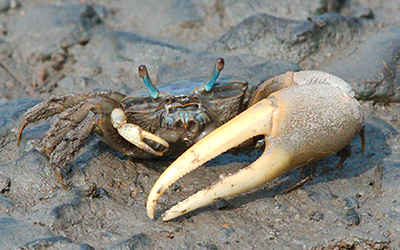
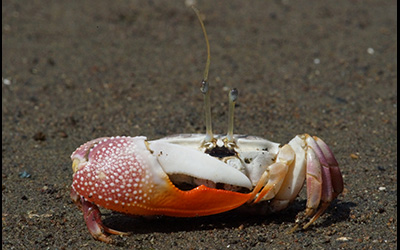
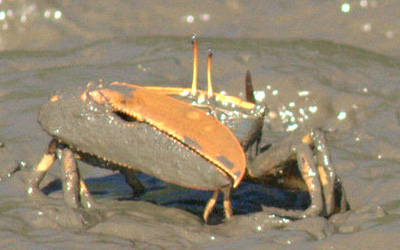
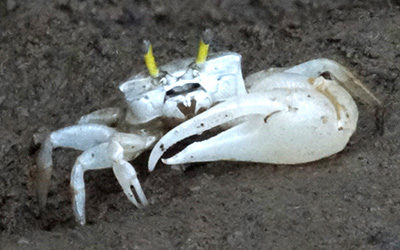
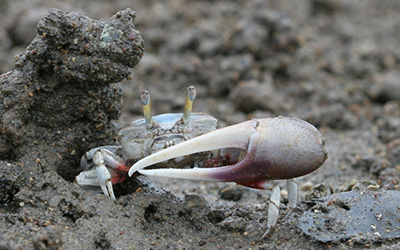
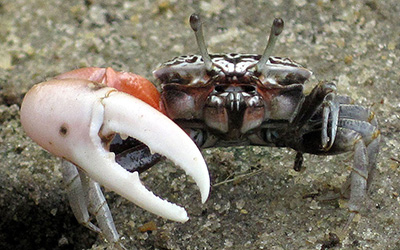
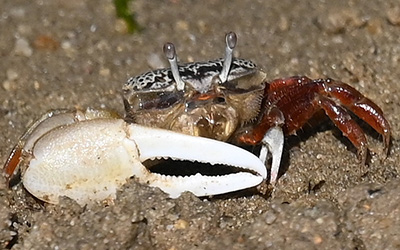

This guide is designed for identification “in the field” where you might be looking at live crabs by eye or through binoculars or from photographs. I will generally try to avoid characters that will require you to physically catch the crab, although I may mention a few for secondary verification. It does not include the more strict taxonomist-style characters that may only be visible under a microscope or via dissection. It is also assumed that the individuals are living, as death (and even capture) can cause dramatic color change.
Generally speaking, it is usually easy to identify whether an unknown crab is a fiddler crab or not. That being said, people often do make mistakes for a variety of reasons. Do an internet search for “fiddler crab” and you’ll find lots of results labeled as such which, in fact, are not.
The key feature of male fiddler crabs is that one of the claws is very large (the major claw) and the other is very small (the minor claw).








Female fiddler crabs have two small claws resembling those of the minor in the male; they are generally harder to identify to species, but are still distinct from other types of crabs.
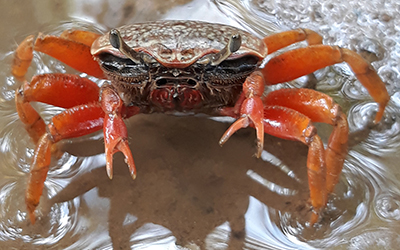
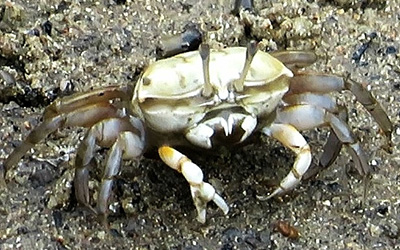
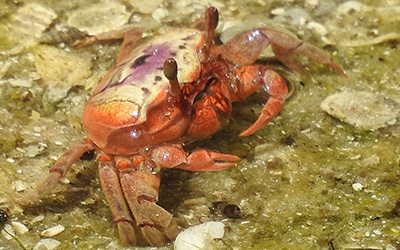
Unfortunately, many assume that any claw asymmetry means that a crab is a fiddler crab, but many crustaceans have claws of different sizes. In male fiddler crabs it is simply much more extreme than in the others.
The crabs most closely related to fiddlers and most frequently confused with them by people online are the ghost crabs (genus Ocypode). Here are a few ghost crabs:
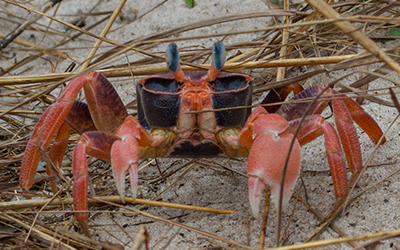
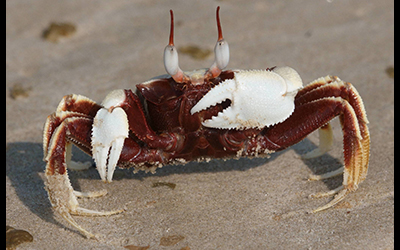
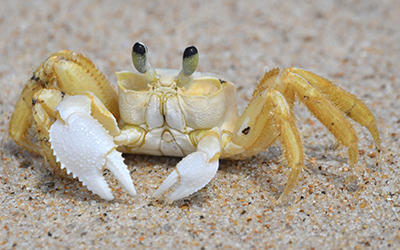
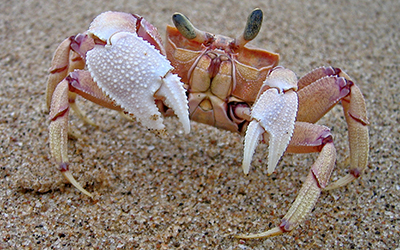
While the claws are clearly different in both size and shape, they are not nearly as different from each other as those in a male fiddler crab. The smaller claw in the ghost crab is still quite a bit closer in size to the larger claw than you find in a fiddler. Another difference to note are the eyes. They are quite a bit thicker and bigger on the ghost crab than the fiddler crabs above. While eye size and length varies among fiddler crabs, they are never as thick and large as on ghost crabs.
Another feature of fiddler crabs is that the carapace tends to be roughly trapezoidal when seen from above, with the longer edge behind the eyes and the shorter edge at their back.
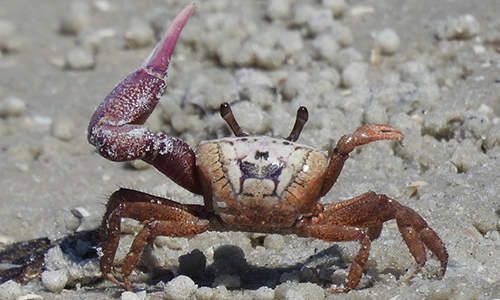

While it varies among fiddler species (some are more extremely trapezoidal while others are almost square), the carapace is never rounded nor does it have scalloped edges. Ghost crabs have fairly square carapaces.
A final character (less useful in photos) is that fiddler crabs are generally quite small. The very largest species only reach about 5–6 cm (2–2.5 inches) wide (measured across the carapace, the large claw can be a longer), and most species are half of that or smaller (the smallest species are less than 1 cm in width). Most of the other crabs you tend to see wandering around beaches or in tide pools are actually larger than this.
Some other crabs commonly mistaken for fiddlers include:
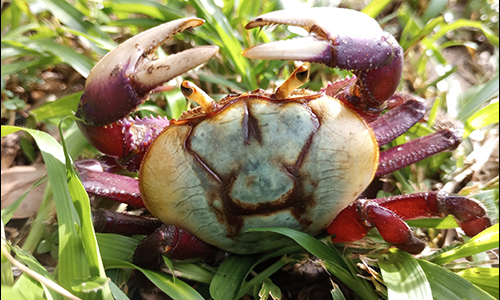
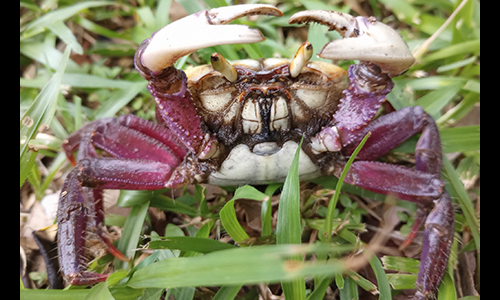
The next closest relative to fiddlers after typical ghost crabs, the carapace is too round, eyestalks are too short and thick, and claws are too large. The species in this genus are also much larger than any fiddler.
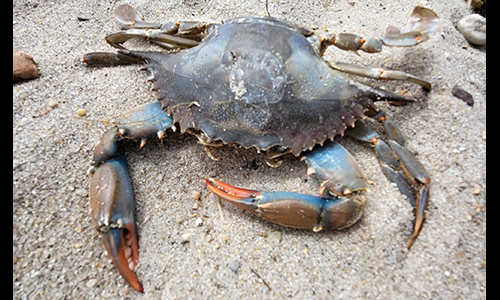
There are so many differences that I am not sure how anyone would confuse them, but it does happen. For this particular comparison the carapace is completely the wrong shape and has scalloping along the front edge. No fiddlers have scalloping.
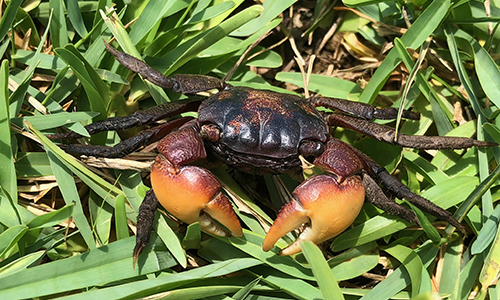
The claws are too large and the eyestalks are short, thick, and on the outer corners of the carapace, rather than closer to the center.
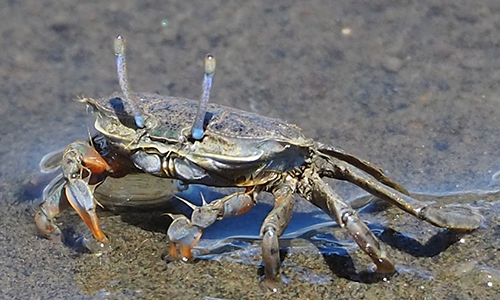
One group of crabs that can appear very fiddler-like are those in the family Macrophthalmidae, which are found in the Indian Ocean and Western Pacific Oceans. These are more closely related to fiddlers than most of the others mentioned so far (other than the ghost crabs). Not all species in this family are readily confused with fiddlers, but some have similar looking eyestalks and two smallish claws that superficially can be confused for a female fiddler. A closer look shows that the claws are usually a bit too large, the carapace is a somewhat different shape, the body tends to be much flatter and thinner than a fiddler, and the legs are usually a bit thicker. It is easy to see how this group causes confusion though as some species are superficially similar.